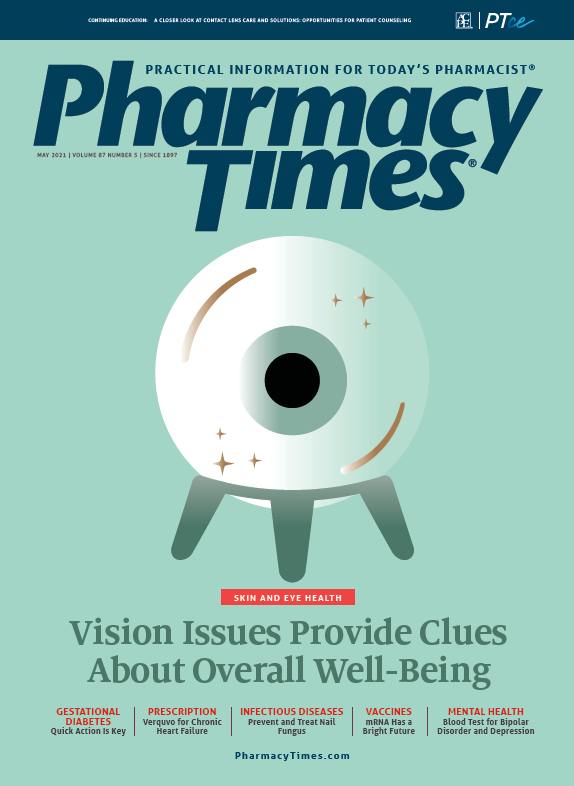Publication
Article
Pharmacy Times
Community Pharmacy Evolves to Provide Direct Patient Care
Author(s):
Collaboration with academic centers expands clinical services to help support health care goals.
The community pharmacy is often the first place where patients, residents, and even future students of the profession meet with a pharmacist.
Pharmacists play a prominent role in communities nationwide. More than 62,000 community pharmacy locations serve as the front door to the profession.1 Nearly 9 out of 10 of Americans live within 5 miles of a community pharmacy, making these stores arguably the most readily available access points for health care in the United States.2
Most American communities have pharmacies that provide access to immunizations and medications, which are critical public health services. However, the business model supporting drug product dispensing is rapidly changing while drug product reimbursement is declining.
This affects how pharmacies operate and propels them to broaden their focus from a business perspective and public health standpoint. As pharmacists seek new ways to maximize their impact and roles
in providing health care services to the public, the need to expand clinical services has become readily apparent.
New Pharmacists Facilitate Changes
With new graduates joining the profession’s ranks each year, academicians and store leaders have sought ways to transform the traditional product-focused community pharmacy model to a patient centered–care model. As community pharmacies experience the tremendous changes in how drug products are reimbursed, there is a growing movement toward pharmacies having connected, coordinated care that ensures value for the health care system and patients. The ability to harness academically oriented clinical skills with the business skills of a community pharmacy expands and increases patient care while diversifying business streams.
Organizing Changes
The Academia-CPESN Transformation (ACT) Pharmacy Collaborative is designed by store leaders, owners, and faculty from various schools to catapult community pharmacy practice transformation on a national scale. ACT is a fully engaged forum between an established, clinically integrated network of community stores and schools of pharmacy that have agreed to collaborate to deliver greater clinical services in the community pharmacy setting. The collaborative provides academia the opportunity to share their experiences with existing community pharmacy partnerships and to understand the business aspect of pharmacy endeavors. Along the way, each partner benefits through sharing of ideas, encountering new challenges, and solving problems together.
ACT is supported by a grant from the Community Pharmacy Foundation. Its design is the direct result of the input provided by community pharmacy enhanced services network (or, CPESN) luminaries and more than 111 faculty members from 66 schools of pharmacy across 33 states. These innovators are working with local pharmacy networks to accelerate practice transformation and help ensure that academic curricula support knowledge and skills for graduates in the evolving community practice. Academia can leverage its existing expertise by amplifying continuing efforts in innovative community pharmacies that are leading the way toward widespread practice transformation.
Enhanced Pharmacy Services
Community pharmacy enhanced services are health-related and medication services that help ensure patients reach their health care goals. These are pharmacy services that go above and beyond dispensing drug products. Health care payers are interested in mechanisms to improve quality and value, whereas prescribers are incentivized to reach health goals for patients. Eighty percent of chronic disease management is related to drug therapy. Appropriate medication use is a critical step in achieving health outcomes for patients living with chronic diseases. Community pharmacy teams are positioned to support patients in managing their health care goals with these enhanced services.
Once a community pharmacy commits to being a part of the ACT collaborative, it can expect to be able to offer many more clinical services. The following areas of focus are examples of those enhanced service offerings:
- Alignment of chronic medication refills to be filled on the same day of other pharmacy visits to review progress toward health care goals
- Documentation in a standardized pharmacist eCare Plan with the ability to transmit the plan electronically to the prescriber electronic health record (see ecareplaninitiative.com)
- Face-to-face access with a pharmacist during scheduled and walk-in appointments to evaluate the patient’s medications
- Medication reconciliation to evaluate and compare the medication orders to what is being taken home to ensure that patients receive the most appropriate, effective, and safe regimen to achieve health goals
- Screenings for patients to ensure that they are aware of recommended immunizations related to their care
- Systematic assessments of patient medications and related health conditions to identify medication-related problems to create a patient plan to resolve them in collaboration with other members of the health care team
Other areas in which community pharmacists can enhance patient care include adherence packaging, administration of long-acting injectables, clozapine dispensing and monitoring, diabetes self-management education, durable medical equipment evaluation and support, hearing aids, home visits, naloxone administration education, smoking cessation counseling, and triage of common and minor ailments and conditions.
How to Join
For more information and details on how to become involved in ACT, contact Melissa Somma McGivney, director of ACT Pharmacy Collaborative and a professor and associate dean for community partnerships at the University of Pittsburgh in Pennsylvania at [email protected].
Ned Milenkovich, PharmD, JD, is the chairman of the health care law practice at Much PC in Chicago, Illinois.
REFERENCES
- Ponushis A, Gandhi N. The future of community pharmacy: direct patient care. American Association of Colleges of Pharmacy. Accessed April 20, 2021. https://www.aacp.org/article/ future-community-pharmacy-direct-patient-care
- CDC. Get to know your pharmacist. Updated January 4, 2021. Accessed April 23, 2021. https://www.cdc.gov/heartdisease/pharmacist.htm#:~:text=An%20important%20member%20of%20your,talk%20with%20about%20your%20health

Newsletter
Stay informed on drug updates, treatment guidelines, and pharmacy practice trends—subscribe to Pharmacy Times for weekly clinical insights.





